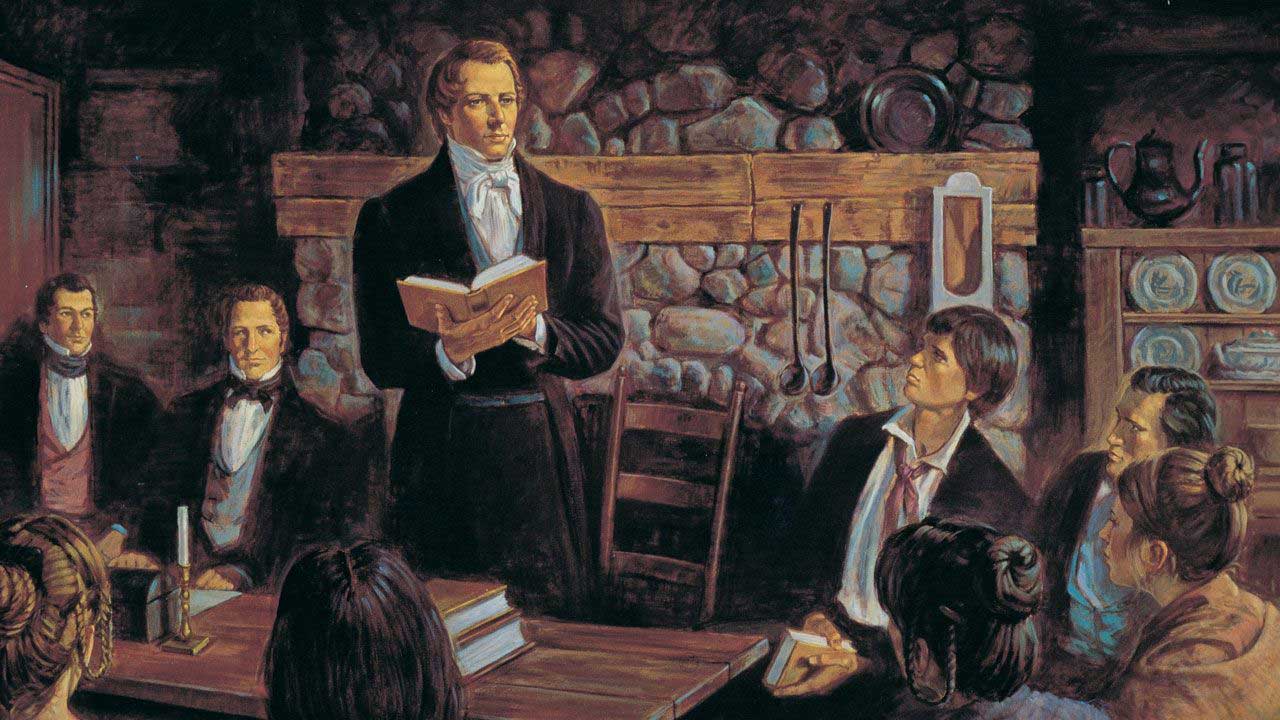/ KnoWhys / KnoWhy #598
How Did the Establishment of Jesus Christ’s Church in 1830 Comply with the Law?

Post contributed by BMC Team
March 2, 2021
D&C KnoWhy #598

“The rise of the Church of Christ in these last days, being one thousand eight hundred and thirty years since the coming of our Lord and Savior Jesus Christ in the flesh, it being regularly organized and established agreeable to the laws of our country, by the will and commandments of God, in the fourth month, and on the sixth day of the month which is called April”
The Know
The organization of The Church of Jesus Christ of Latter-day Saints (then called just “the Church of Christ”) on April 6, 1830 was carried out “by the will and commandments of God” and also “established agreeable to the laws of our country” (D&C 20:1). For a long time, historians misunderstood the implications of this statement. Recent analysis by David Keith Stott, a practicing attorney in New York, significantly clarifies how the establishment of the Church was done in accordance with New York law and customs of the time.1
As Stott explains, there were two ways to organize a church in New York in 1830. One was to establish a religious corporation and the other was to organize a religious society.2 Specific statutes in New York law dictated the procedures for the incorporation of a church. While the historical accounts of the Church’s organization in 1830 have some superficial resemblances to some of the legal incorporation requirements, key details are missing. For instance, there is no evidence that trustees were selected to administer the Church’s business affairs, nor that a certificate of incorporation was ever filed with the county clerk.3
Thus, Stott argues that on April 6, 1830, the Church was organized as an unincorporated religious society. Fewer legal requirements were involved in this type of establishment, but there were still customary practices and procedures expected to be followed.4 Drawing on the typical practices of Presbyterians, Methodists, Baptists, and Episcopalians, Stott shows that the organization of the Church followed the norms in place around 1830. Stott specifically identifies five ways these norms were followed:
- As they prepared to organize the Church, Joseph Smith said they “made known to our brethren, that we had received commandment to organize the Church.”5 According to Stott, “Both the Presbyterian and Episcopalian churches required notice be given to the prospective membership of a religious society.”6
- Joseph asked the congregation to accept and sustain him and Oliver Cowdery as “their teachers in the things of the Kingdom of God,”7 and they were identified by revelation as the first and second elders of the Church (D&C 20:2–3). Similarly, the Presbyterians required the new congregations elect two “ruling elders” by the raise of the right hand.8
- The April 6, 1830 meeting opened with prayer and included the administration of the sacrament and the bearing of testimony. Such practices “could be considered parts of a normal worship service, similar to the Presbyterian organizational meeting that began with the ‘usual exercises of public worship’.”9
- Joseph Smith, Oliver Cowdery, and others were ordained to priesthood offices, and baptisms and confirmations were performed. “This coincides with the practice of the Baptist and Episcopal churches, who similarly ordained other officers and accepted additional members into their church through baptism on the days of organization.”10
- The giving of the first official name of the Church (“The Church of Christ”) was consistent with common practices in the Baptist and Episcopal churches of designating a name for new congregations upon organization. A revelation dictated that a record be kept among the Church (D&C 20:82), similar to Methodist practices of keeping a “general register” of members after organizing a new congregation.
- Lastly, the Articles and Covenants (today’s section twenty of the Doctrine and Covenants) were established and agreed upon shortly after the Church was organized, consistent with other churches’ practices of adopting constitutions, bylaws, articles of association, or articles of faith at their organizational meetings.11
The Why
This background, provided by Stott’s careful research, clarifies how the Church was “organized and established agreeable to the laws of our country” (D&C 20:1). As Stott noted, this “can just as well be construed as a declaration that the organization was done ‘legally’ or ‘in a customary manner’,” rather than mean that the Church was organized in accordance with a specific statute.12
Organizing an unincorporated religious society held certain advantages that would have been attractive to Joseph and his followers. It allowed Joseph Smith and other Church leaders, as ministers in a legally organized religious society, to officiate in weddings. And members could hold property on behalf of the Church—both matters that the organization of the Church “according to the laws of the land” was intended to address, according to David Whitmer.13
In contrast, however, following the New York statutes and stipulations on how religious corporations were to be organized would have been at odds with the Lord’s revealed order for the Church in 1830.14 Such corporate legal structures would have hampered the development of the Church’s unique array of priesthood offices as was unfolded in revelations given in the years that followed. Thus, not incorporating at that time allowed the Church the flexibility to develop according to the Lord’s designs. As such, organizing as an unincorporated religious society under New York law was the best way for the early Church to organize and get started in a way that was both “agreeable to the laws of our country” and “by the will and commandments of God” (D&C 20:1).
Further Reading
David Keith Stott, “Organizing the Church as a Religious Association in 1830,” in Sustaining the Law: Joseph Smith’s Legal Encounters, ed. Gordon A. Madsen, Jeffery N. Walker, and John W. Welch (Provo, UT: BYU Studies, 2014), 113–139.
1. See David Keith Stott, “Organizing the Church as a Religious Association in 1830,” in Sustaining the Law: Joseph Smith’s Legal Encounters, ed. Gordon A. Madsen, Jeffery N. Walker, and John W. Welch (Provo, UT: BYU Studies, 2014), 113–139.
2. Stott, “Organizing the Church,” 113.
3. See Stott, “Organizing the Church,” 115–125, esp. the table on p. 122.
4. See Stott, “Organizing the Church,” 125–132.
5. Joseph Smith, History, ca. June 1839–1841 [Draft 2], 37, online on josephsmithpapers.org.
6. Stott, “Organizing the Church,” 133.
7. Joseph Smith, History, ca. June 1839–1841 [Draft 2], 37, online on josephsmithpapers.org.
8. Stott, “Organizing the Church,” 133.
9. Stott, “Organizing the Church,” 133–134.
10. Stott, “Organizing the Church,” 134.
11. Stott, “Organizing the Church,” 134–135.
12. Stott, “Organizing the Church,” 136.
13. Stott, “Organizing the Church,” 135–137.
14. See Stott, “Organizing the Church,” 120–121.

